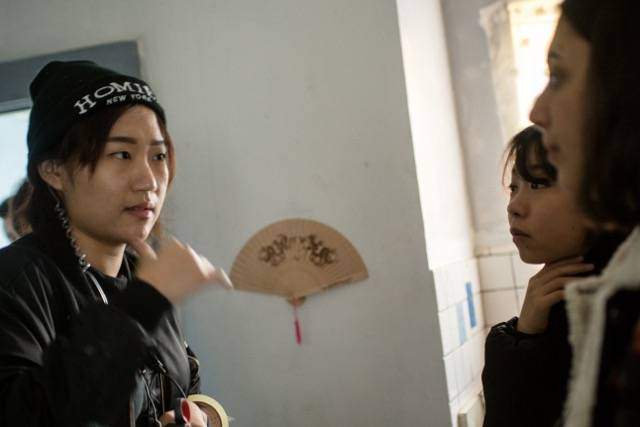Having a great idea for a film is a fine starting point but if you can’t manifest this properly for the camera, it’s not going to have an impact. Elaine Wong knew that she had a great script for Where Dreams Rest that would tell a specifically modern immigrant story but was wise enough to know that the utilization of production designer Yuelin Zhao was the proper starting point to set a tone of excellence for this production.
In contrast to so many films about immigrants, Where Dreams Rest is a deeply personal story which is as profound in depicting the emotional state of the main characters as the precarious situation they find themselves in. Working in tandem with the film’s director, Yuelin assembled the components which fuel this gripping portrayal of those who seek to find a better life by risking it all. In addition to enthusiastic public response, these efforts resulted in Where Dreams Rest garnering three wins at the Five Continents International Film Festival and a Best Art Direction nomination for Yuelin Zhao.

A huge ingredient that sets Where Dreams Rest apart from so many other films which feature the plight of immigrants is its recognition of the fact that the struggle to arrive in the U.S. is only one facet of the journey. Seen through the eyes of Ah Wei, a young woman from rural China who decides to cross the U.S.-Mexico border through the underground tunnel to reunite with her husband in the United States, it becomes clear that managing expectations upon arrival to America is as daunting as the trek itself.
As Ah Wei’s dreams shatter, we understand that there are strong and varied motivations that rebuke any monolith stereotype. The filmmakers behind this production are particularly adept at blurring the lines between the dreams and reality of the immigrants featured in this story, none more so than Yuelin. As the person in charge of the visual language of the film, Ms. Zhao’s choices of color palettes, textures, furniture selections, themes, and other visual elements evokes an experience which vacillates between lucidity and delirium.

Colors have a strong influence in the emotional tone and subtext of Where Dreams Rest. Ah Wei’s warm colored outfit strongly contrasts against the drab garb of those around her in the house full of illegal immigrants in which she and her husband reside. It’s an early indicator that she does not belong.
While her husband’s room is pale initially, Ah Wei brings color to it with accents like a Tiffany lamp, a red alarm clock, and others. As she begins to lose her optimistic perspective, Ah Wei settles into drab color tones which rebuke any vibrancy.
Yuelin describes her intention by stating, “It was really a bold decision that I incorporated the idea of “oil painting” into the set dressing of our location. It is more of a dreamy space instead of the miserable place you might see in reality. I chose two different shades of green as the wall color. After giving the wall its first layer and before it dried up, I dabbed a wet rag on the wall to create an ‘ocean wave’ effect. Then I added another layer of a darker shade of green to make the pattern more visible.
When Ah Wei enters the space where her dream is supposed to live, her dream also crashes at the same time. The heartbreaking truth becomes very ironic in that beautiful, painting-like room.”
Yuelin was in attendance at the Indie Short Festival where the film won the best production design award. She admits, “Watching your film with an audience is always a nerve wracking experience. I’m constantly criticizing my own work and thinking of what might have worked better. Still, I was quite pleased with the incredible response the film received and the positive take on my work. I am very proud of my color palette choices and all the colors look great on camera, and I am really thankful that people have recognized how much effort we have put into production design. Hard work really pays off.”
Writer : Arlen Gann